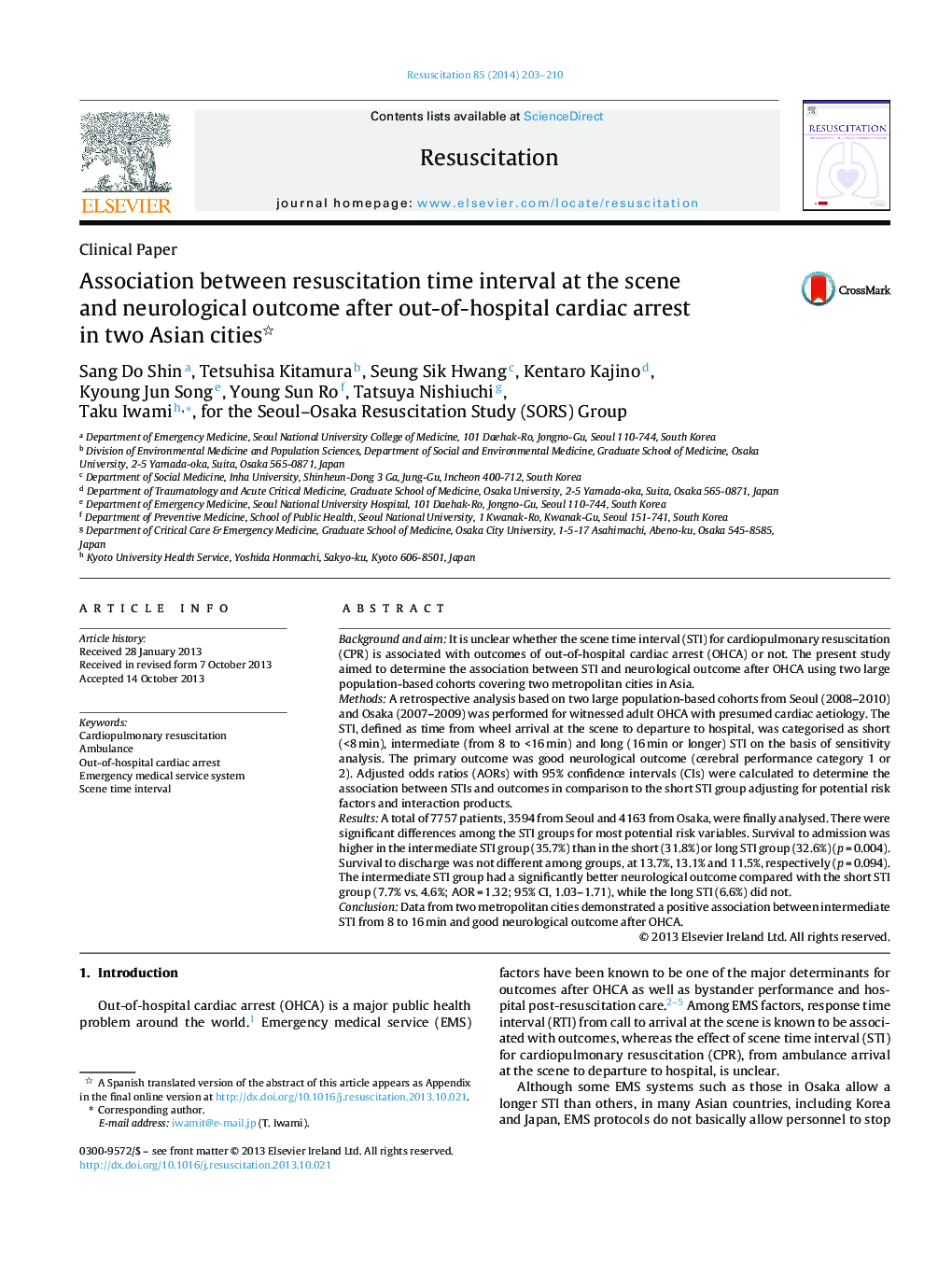| کد مقاله | کد نشریه | سال انتشار | مقاله انگلیسی | نسخه تمام متن |
|---|---|---|---|---|
| 3008397 | 1181456 | 2014 | 8 صفحه PDF | دانلود رایگان |

Background and aimIt is unclear whether the scene time interval (STI) for cardiopulmonary resuscitation (CPR) is associated with outcomes of out-of-hospital cardiac arrest (OHCA) or not. The present study aimed to determine the association between STI and neurological outcome after OHCA using two large population-based cohorts covering two metropolitan cities in Asia.MethodsA retrospective analysis based on two large population-based cohorts from Seoul (2008–2010) and Osaka (2007–2009) was performed for witnessed adult OHCA with presumed cardiac aetiology. The STI, defined as time from wheel arrival at the scene to departure to hospital, was categorised as short (<8 min), intermediate (from 8 to <16 min) and long (16 min or longer) STI on the basis of sensitivity analysis. The primary outcome was good neurological outcome (cerebral performance category 1 or 2). Adjusted odds ratios (AORs) with 95% confidence intervals (CIs) were calculated to determine the association between STIs and outcomes in comparison to the short STI group adjusting for potential risk factors and interaction products.ResultsA total of 7757 patients, 3594 from Seoul and 4163 from Osaka, were finally analysed. There were significant differences among the STI groups for most potential risk variables. Survival to admission was higher in the intermediate STI group (35.7%) than in the short (31.8%) or long STI group (32.6%) (p = 0.004). Survival to discharge was not different among groups, at 13.7%, 13.1% and 11.5%, respectively (p = 0.094). The intermediate STI group had a significantly better neurological outcome compared with the short STI group (7.7% vs. 4.6%; AOR = 1.32; 95% CI, 1.03–1.71), while the long STI (6.6%) did not.ConclusionData from two metropolitan cities demonstrated a positive association between intermediate STI from 8 to 16 min and good neurological outcome after OHCA.
Journal: Resuscitation - Volume 85, Issue 2, February 2014, Pages 203–210